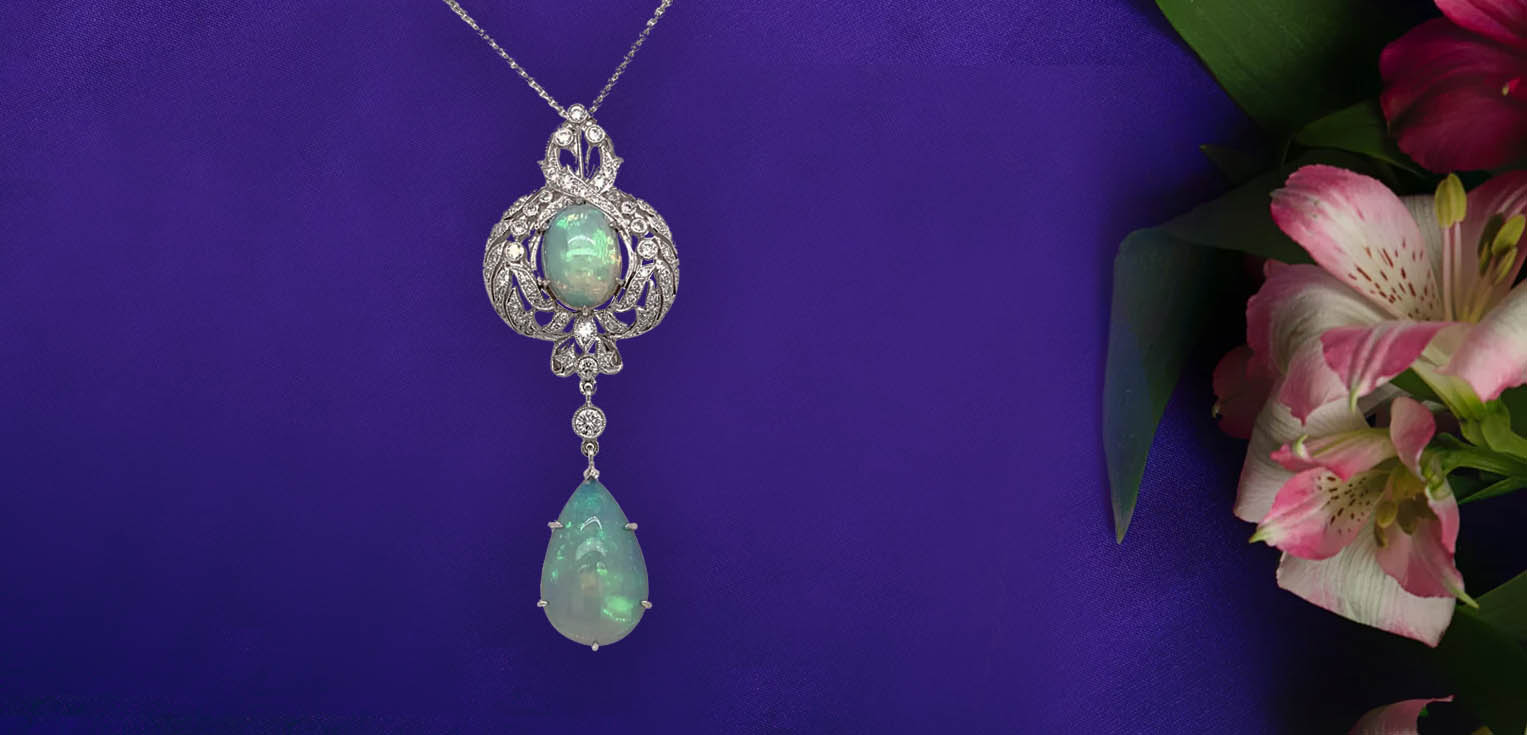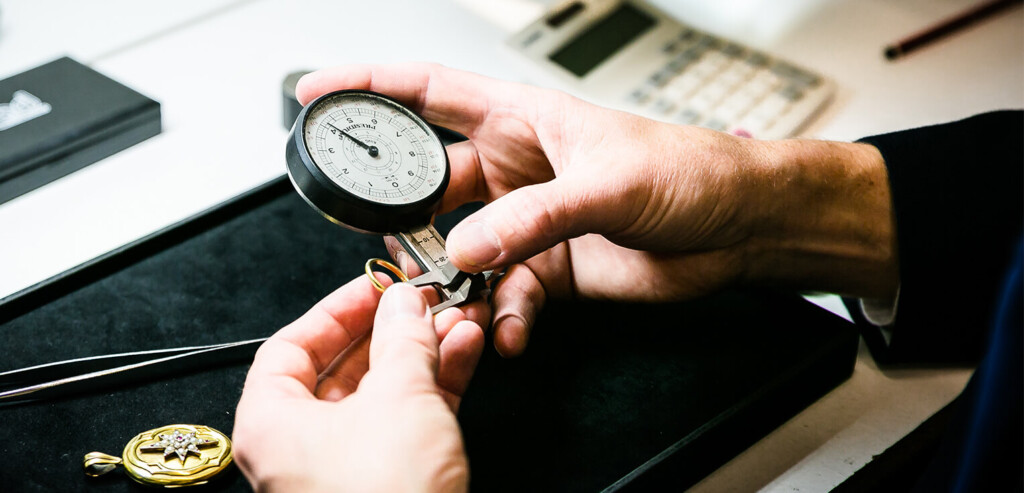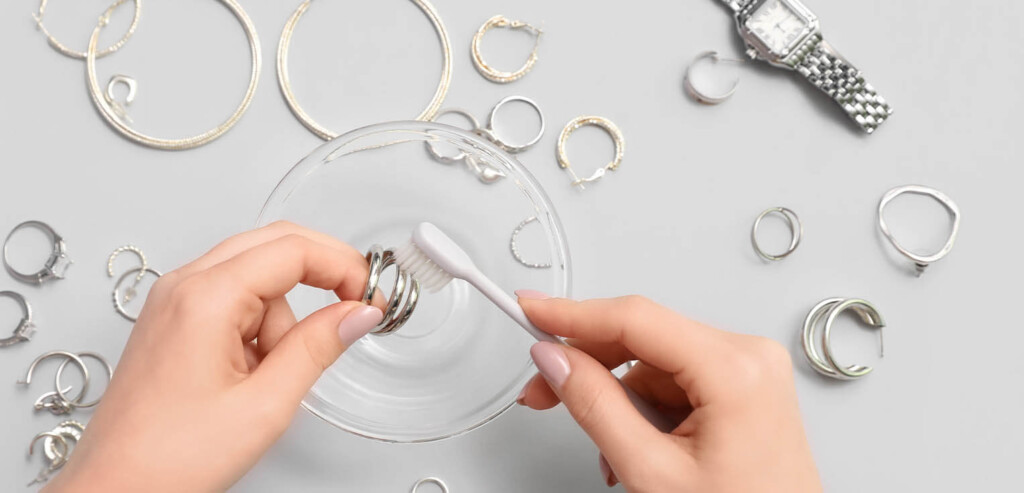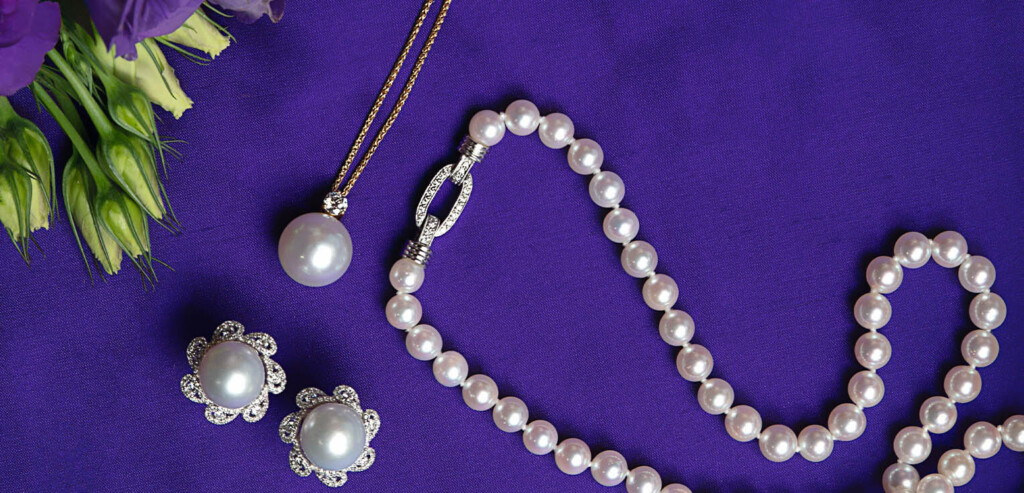With a rainbow effect and flashes of brilliance, opal is quite unlike any other gemstone. It has incredible fire, with a name that stems from the Greek ‘Opallios’ which means a change in colour and the Latin term ‘Opalus’, meaning precious stone. It’s been a popular choice for jewellery for many centuries, due to this chameleon-like ability to change colour in different light.
A history of opals
Opals have inspired folklore for centuries, dating back to the ancient Greeks who believed they were the tears of Zeus and the Aborigines who believed they were a sign of the rainbow serpent god. In the Middle Ages, opals were considered a source of luck and possessed all the virtues of each gemstone colour found in the spectrum of the opal. They’re also the birthstone for people born in October. It was even referenced in William Shakespeare’s ‘Twelfth Night’, calling it the queen of gems. As with so many of the trends we enjoy today, Queen Victoria popularised the opal, wearing it regularly and increasing sales worldwide as a result. As such, it’s a common feature of vintage jewellery.
Where are opals found?
Opals are considered one of the more difficult gems to mine, because on the surface, it’s difficult for miners to tell if there are any opals below the ground. So it’s often a case of trial and error to find them. The best examples of this precious gemstone tend to be extracted with handpicks and screwdrivers, rather than machinery, making it a time-consuming and laborious job. Most of the world’s opals are mined in Australia, but they are also found in Mexico, Brazil, Indonesia, Ethiopia, Czech Republic and the USA.
Types of opal
There are two classes of opal: precious and common. Precious opal has an iridescence that’s referred to as a ‘play of colour’, while common opal does not. Opalescence is the term applied to a milky sheen that occurs with common opal. Depending on the conditions in which an opal is formed, it can be transparent, translucent or opaque, while the background colour can be any shade.
Black opals
Black opals are considered to be the rarest kind, and the most valuable for this reason. Even thin slivers of black opal can fetch thousands. It’s been highly prized throughout history by kings, emperors and sultans for its beauty. It has a black background and little to no opalescence. Unlike other opals, black opals have trace elements of carbon and iron oxide which is what makes it unusually dark compared to other types of opal.
White opal
This is the most common type of opal, with a white background and a sub-transparent or translucent display of opalescence. It showcases a wide spectrum of colours.
Fire opal
This is a transparent to translucent opal with warmer body colours of yellow, orange and red. It doesn’t typically have a play of colour but sometimes rarer stones will have flashes of green. In indigenous cultures, fire opals were highly prized, and in ancient India and Persia, it was considered to be a symbol of ardent love.
Girasol opal
This opal has a bluish tint or sheen that follows the light source, which is not a play of colour seen on precious opals, but an effect caused by microscopic inclusions.
Peruvian opal
A semi-opaque opal that is often cut to include the matrix in more opaque stones. There’s no play of colour with this type of stone, but it has a blue-green tint to it.
Boulder or matrix opal
This is the term used for rough-cut opals that display a precious opal within them or attached to them. They often have just a thin vein of precious opal in the host rock.
Hyalite opal
A colourless opal which looks like glass but in very rare cases, will have a faint tint of colour, often blue, green or yellow.
There are also terms for the patterning found in opals. Experts and collectors tend to look for large, closely arranged patches of colour or pattern, and the brighter the colour, the more valuable the opal will be. A pinfire or pinpoint pattern is a small, closely-set patch of colour, while a harlequin or mosaic pattern is more broad and angular. Flame patterns are sweeping bands of reddish streaks which carry across the stone, and peacock patterning is an opal with mainly blue or green colouring.
Opals in jewellery
Doublet opals consist of a top slice of the gem glued onto a darker backing made from either plastic or another gemstone. Triplet opals are similar, but the slice of opal is thinner and crowned by a transparent dome of quartz to protect the opal underneath and to refract the colours more effectively.
Opals are softer than many other gemstones and can be more easily chipped as a result. For this reason, triplet opals are more commonly chosen for a long-lasting, wearable piece of jewellery.
Opals can be used in many types of jewellery, from bracelets and earrings to pendants. It’s also a fun alternative to the traditional engagement ring, adding those enticing flashes of rainbow colours that make for a unique and personal item of jewellery.
Final thoughts
Opals have been treasured for thousands of years, inspiring folklore and being desired by royalty. The iridescence of precious opals and the wide range of colours, patterns and types you can source them in make them a unique and beautiful gemstone, especially for jewellery. Whether you choose an opal ring, pendant or you’re buying a memorable item for an October birthday or anniversary, this inimitable gemstone is perfect and offers a wide range of colourful options to choose from.
Contact us
At Cry for the Moon, we offer a host of jewellery in a variety of beautiful styles, from bridal jewellery and wedding bands to vintage pieces. Browse our selection online or get in touch with us directly if you have any further questions.





